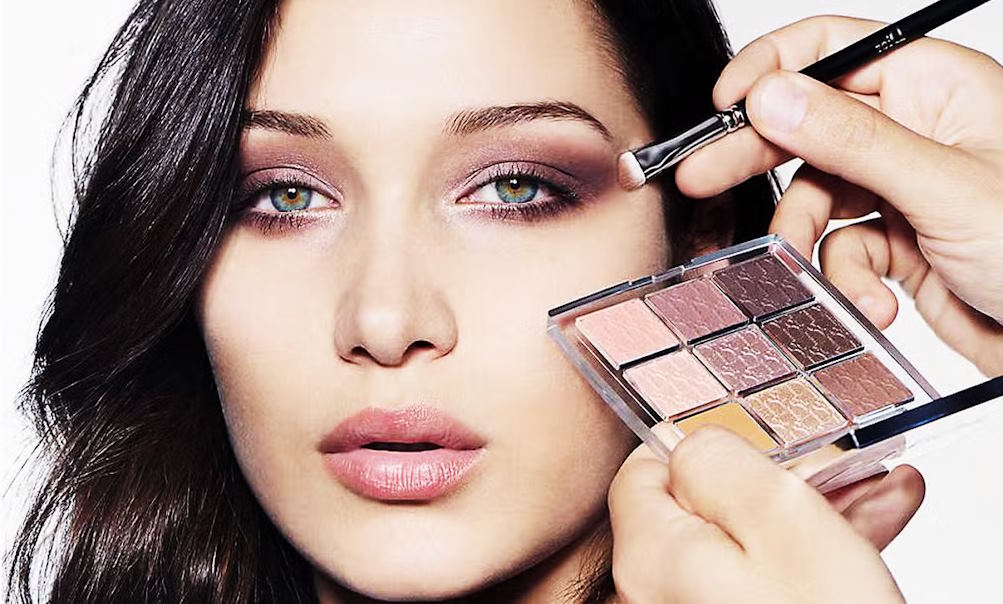Blending is more than just a simple step in the makeup routine; it’s an art form that holds the power to transform amateur attempts into professional-grade results. Whether you’re aiming for a natural, everyday look or a bold, glamorous statement, mastering the art of blending is essential for achieving seamless transitions, flawless finishes, and long-lasting makeup.
Why Blending Matters
Blending is more than just a step in the makeup process; it’s the bridge between individual makeup products and the flawless canvas you desire. The importance of blending cannot be overstated, as it plays a crucial role in several aspects of makeup application:
- Seamless Transitions: Blending ensures that there are no harsh lines or stark contrasts between different makeup products. Whether it’s blending foundation into the skin or seamlessly transitioning between eyeshadow colors, the goal is to create a smooth and uniform appearance.
- Avoiding Patchiness: Ever applied eyeshadow only to find patches of uneven color? Proper blending techniques help to distribute product evenly, preventing patchiness and ensuring a consistent application across the entire area.
- Creating Dimension and Depth: Blending allows you to sculpt and define your features, whether it’s contouring to enhance cheekbones or adding depth to the eyes with gradient eyeshadow. By seamlessly blending different shades, you can create dimension and add depth to your makeup look.
- Enhancing Longevity: Well-blended makeup tends to last longer throughout the day. By ensuring that products are thoroughly blended into the skin, you can prevent creasing, fading, and smudging, thus prolonging the wear time of your makeup.
Techniques for Effective Blending
Achieving seamless blending requires more than just applying makeup; it involves mastering various techniques and using the right tools. Here are some key techniques for effective blending:
-
 Choosing the Right Tools: The tools you use can significantly impact the blending process. While brushes are ideal for blending foundation and eyeshadow, makeup sponges are excellent for achieving a flawless finish with liquid and cream products. Additionally, don’t underestimate the power of your fingers, which can be used to blend and soften makeup for a natural-looking finish.
Choosing the Right Tools: The tools you use can significantly impact the blending process. While brushes are ideal for blending foundation and eyeshadow, makeup sponges are excellent for achieving a flawless finish with liquid and cream products. Additionally, don’t underestimate the power of your fingers, which can be used to blend and soften makeup for a natural-looking finish. - Using the Correct Motions: Different makeup products require different blending motions. For example, when blending foundation, use sweeping or tapping motions to evenly distribute the product. When blending eyeshadow, opt for circular motions to seamlessly blend different shades together. Experiment with different techniques to find what works best for you.
- Understanding Product Placement: Proper product placement is essential for effective blending. Start by applying small amounts of product and gradually build up the intensity, focusing on blending as you go. Pay attention to areas where makeup tends to crease or settle, such as the under-eye area and around the nose, and blend accordingly to prevent creasing and ensure a smooth finish.
- Blending Multiple Products: Many makeup looks involve blending multiple products together for a cohesive finish. Whether it’s blending foundation and concealer for a flawless base or blending different eyeshadow colors for a gradient effect, take your time to ensure that each product seamlessly blends into the next, creating a cohesive and polished look.
Blending Tips for Different Makeup Products
Different makeup products require different blending techniques to achieve optimal results. Here are some tips for effectively blending various types of makeup:
- Foundation and Concealer: When blending foundation and concealer, start with small amounts of product and blend in thin layers, focusing on areas that require additional coverage. Use tapping or sweeping motions to blend the product into the skin, ensuring a seamless finish.
- Eyeshadow: For eyeshadow blending, start with a transition shade to create a smooth base, then gradually build up the intensity with darker shades. Use a blending brush to seamlessly blend the colors together, focusing on the crease and outer corner for depth and dimension.
- Blush and Bronzer: When applying blush and bronzer, use a light hand and build up the color gradually to avoid harsh lines. Blend the product along the cheekbones and temples using circular motions, blending upwards towards the hairline for a natural-looking flush of color.
- Highlighter: To achieve a natural-looking glow, blend highlighter onto the high points of the face, such as the cheekbones, brow bone, and cupid’s bow. Use a fluffy brush or makeup sponge to blend the product into the skin, ensuring a seamless and luminous finish.
Common Mistakes to Avoid
While blending is a crucial step in makeup application, there are several common mistakes that can detract from the final result. Here are some pitfalls to avoid:
- Over-Blending or Under-Blending: Finding the right balance is key when it comes to blending. Over-blending can result in muddy colors and a lack of definition, while under-blending can leave harsh lines and patchiness. Take your time and blend in small, circular motions to achieve a seamless finish.
- Using Too Much Product: Applying too much product can overwhelm the skin and make blending more challenging. Start with a small amount of product and gradually build up the intensity as needed, focusing on blending as you go for a natural-looking finish.
- Not Blending Along the Edges: Neglecting to blend along the edges of your makeup can result in harsh lines and an unnatural appearance. Take the time to blend along the edges of each product, ensuring a seamless transition between colors and textures.
- Neglecting to Blend Between Different Areas of the Face: Blending isn’t just about blending individual products; it’s also about blending different areas of the face together for a cohesive look. Pay attention to areas where different products meet, such as the jawline and hairline, and blend accordingly to ensure a seamless finish.


